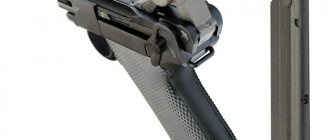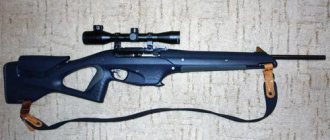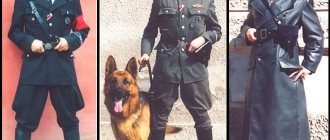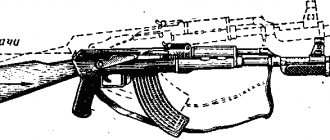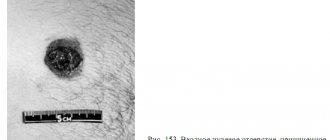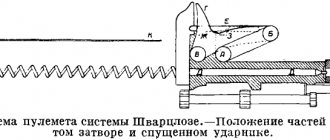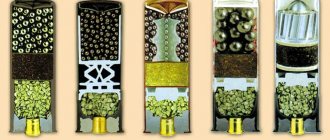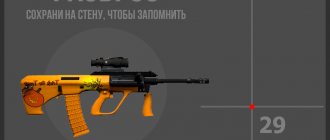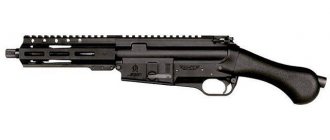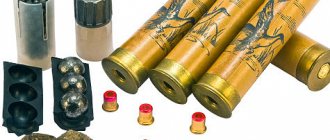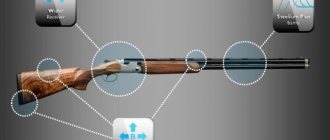If you love intellectual relaxation, then you probably do crossword puzzles or scanword puzzles in your spare time. Of course, this is a very exciting activity that allows you to expand your horizons and demonstrate your erudition.
Just how often have you encountered a situation where you need to guess, for example, a 6-letter word that you have no idea about? Most likely, you will remember more than one such case when, due to such an unfortunate misunderstanding, another scanword puzzle remained incompletely solved. But now you have a unique assistant - the Crossopen.ru !
Answers to scanwords on VKontakte, Odnoklassniki and many others
What is our service?
It will replace you with many dictionaries, encyclopedias and well-read relatives with whom you previously consulted if you were unable to find the right word on your own. With Crossopen.ru you can easily solve a crossword puzzle of any difficulty level using an intuitive search form.
The main advantage of our service is a huge database of words and questions for which you can find the appropriate answer. A user-friendly interface will provide you with a quick search for words of 3, 4, 5 or more letters . It is important to note that at the same time you can clarify your request by indicating the subject, as well as the letters you already know - the so-called word search by mask .
Let's look at the interface using a clear example: you need to find out the poet's last name, which has 6 letters, and the third is “sh”. You set up a search for 6-letter words, click on the corresponding empty cell and insert the letter you know, after which you specify the keyword - “poet”. As a result, you get various options, one of which is sure to be correct. This way you can find any answers to crossword puzzles , because it’s very simple!
You can solve any crossword puzzle!
Our service is absolutely free, and you can freely use it to search for answers to any crossword or scanword puzzle, both from the newspaper and on the Internet. For example, our database contains almost all the answers to Odnoklassniki and VKontakte crossword puzzles, which will allow you to solve them quickly and with pleasure.
Plus, you can create these kinds of brain teasers yourself! To do this, just list the words in alphabetical order and choose the options that suit you with descriptions so that the resulting crossword puzzle is interesting and educational.
So if you like to solve crosswords, the Crossopen.ru will become a convenient and reliable assistant for you. Spend your free time doing your favorite activity with pleasure!
Is the recoil of a shot familiar, but little understood?
I was prompted to take up this article by the long-established stereotypical statements of many authors, which have been “wandering” for a long time from publication to publication, such as: “the use of new gunpowder allows you to reduce muzzle pressure and reduce recoil by 10-15%,” “thanks to the presence of a gas exhaust mechanism, recoil is reduced by 20 -25%" and the like. Alas, these figures have little to do with reality and often look like an advertisement for a fly masquerading as the “big African fly.” In this case, to measure the magnitude of recoil, the energy dimension (J, kgf.m) is used, which does not always correctly reflect the real recoil that we feel.
The following primarily concerns smooth-bore guns; for rifled weapons, everything happens in a similar way, although there may be noticeable differences.
Physics from the school course:
To somewhat simplify our reasoning and the physical model of the process, we will assume that the weapon at the moment of the shot is not pressed (pressed very weakly) to the shoulder and we only support it with our hands in weight. In fact, we will make little mistake against the truth, since even if the weapon is pressed very tightly to the shoulder, this has little effect on the perception of recoil and, most importantly, does not in any way affect the comparative results that interest us when firing from different weapons with different ammunition.
“The action force is equal and opposite in direction to the reaction force” - Newton’s third law is well known to many. Or in other words, the law of conservation of momentum. Let there be a stationary gun with cartridges, if the shot (bullet), as well as wads and spacers along with it, with a total mass Mdr, left the gun barrel with a speed Vdr, then the gunpowder gases of mass Mthr “left” the barrel with an average speed Vthr, then the gun (with the remaining cartridge case and cartridges) with the mass Mruzh with a stationary barrel (single-barrel, double-barrel, gas outlet and others) will acquire a speed Vruz in the opposite direction, which is easily determined from the formula.
Mout x Vout = Mdr x Vdr + Mthr x Vthr
Since before the shot the weapon was motionless and the total impulse (the product of the mass of the body (or gas) by its speed) was equal to zero, then after the shot the impulse of the gun must equalize the impulse of the shot, wads and powder gases so that the sum is still equal to zero. Moreover, we do not need to understand how the internal processes occurred during the shot and know their parameters (gas pressure, friction force, length and diameter of the barrel). There is a mass of shot, wads, powder gases (gunpowder) and their speed - then the product of the mass of the gun and its speed is determined uniquely. More gunpowder and shot - definitely more momentum of the gun. Given equal barrel lengths, the same drilling, and the same ammunition, the lighter gun will gain greater velocity, but the momentum of the gun (the product of the mass of the gun and its speed) will remain approximately the same for guns of different masses.
To be completely precise, there are still very slight differences. A lighter gun will have slightly less muzzle velocity (and momentum) because a little more of the gunpowder's energy will be used to impart a little more kinetic energy to that gun. Some of the energy from the gas outlet, although very small, will be taken away by the operation of the reloading mechanism. But all these differences are very small and range from 1-1.5%.
After the shot (bullet) leaves and the powder gases flow out, we “stop” the gun with our shoulder, applying some force to it; our shoulder also feels the same force (recoil force). The product of the average recoil force and the time during which it acts is already called the recoil impulse, which in our case should reduce the impulse (speed) of the gun to zero. That is, the recoil impulse is equal to the impulse of the gun. Accordingly, an increase in the mass of gunpowder and (or) shot in the cartridge leads to an increase in the impulse (speed) of the gun and, therefore, the recoil we feel.
Since the recoil force is not a constant value over the entire period of time, you can divide the interaction time into many small segments t and multiply by the average force acting in each of them, and then add the results and get the force impulse. This process is called integration, and if you draw a graph of the recoil force over time, the area under the graph will be exactly equal to the impulse of the recoil force. And the corresponding formula will be written as follows:
P = Outside x Vout = Freturn av x tair = Sum(Fi x ti)
In the process of perceiving recoil, two stages can be roughly distinguished. At the first, main stage of the impact, the gun “hits” the shoulder and dampens most of the momentum and speed of the gun. The recoil force reaches its maximum. During this period, the shoulder, together with the upper body, acquires some speed and continues to move backward with the gun. Further, at the second stage, we “slow down” the shoulder with the gun due to the elasticity and certain tension of the core muscles. The second stage usually takes longer than the first (especially if you are of a relatively light build and use fairly powerful cartridges), and the felt recoil force will be small, since the main part of the gun’s impulse has already been extinguished. When firing from rifled weapons and small caliber smooth-bore guns, with a small recoil impulse, the second stage can be shorter and almost unnoticeable.
The same recoil force impulse can be obtained in a shorter period of time of the main impact, having a larger maximum (and average) value of the recoil force, or in a longer time with a lower maximum recoil force. Obviously, in the second case, the return we feel will be less.
Thus, objectively, recoil as a whole (as we understand it in the “everyday” sense) is characterized by the total impulse of the recoil force and, most importantly, the maximum value of the recoil force itself. And these concepts must be clearly separated.
Practical conclusions and recommendations in real shooting:
Given the same type of weapon and the same ammunition, the lighter gun will receive greater velocity, that is, it will hit the shoulder "sharperly", affecting it for a shorter main time. Consequently, the maximum recoil force will be higher, which is confirmed by practice. If the recoil is difficult to bear, then the solution is either a heavier gun, or “lighter” cartridges, or self-loading with a long barrel stroke. (More on long barrel stroke below).
A lighter gun, having a higher speed, will also have greater kinetic energy (at the same impulse value as a heavier gun, which has a lower speed), since energy is proportional to the square of the speed. That is, the value of the gun’s energy after firing (the product of mass and speed squared and divided in half) can be a certain criterion for recoil force, but only with the same type and design of guns.
For example, it is worth putting a rubber butt pad on the gun (especially a soft one), which will slightly increase the length of the shock absorption stroke of the gun when it meets the shoulder and “stretch” the impact time at the first stage, and the recoil force will decrease. The same effect will be achieved, for example, by a thick padded jacket with many sweaters.
The recommendation to press the gun tightly has the meaning that the noticeable impact of the weapon on the shoulder begins a little earlier, even before the projectile leaves the barrel, the time of the main impact increases slightly and the recoil force decreases. But here you need to not overdo it, unnecessarily straining the torso muscles. The stiffer the body is, the more difficult it is for the shoulder to begin to “follow” the butt back, increasing the stroke and “stretching out” the time of impact, and you certainly should not lean your shoulder against any support (wood, etc.) - you will probably have a broken shoulder will be provided. Therefore, when shooting while lying down, when the body is significantly stiffened, you will quickly knock off your shoulder, and it is better to fire a smooth-bore weapon from a sitting position at a table with support under the fore-end. Also, a person of greater weight (120kg compared to 70kg is a very big difference) will objectively, all other things being equal, experience a greater maximum recoil force. A heavy shoulder and body are more difficult to “throw” back, and the total time of impact will be noticeably shorter, although the recoil itself may be subjectively easier to bear.
The shape of the stock (as well as the weight distribution, the position of the center of gravity) of the weapon is also of some importance. For example, when the stock is a continuation of the line of the barrel (bulpup layout and similar), the recoil will be perceived a little stronger.
As we see, the recoil force, the way it actually changes over time and affects us, is not only an objective characteristic of weapons and cartridges, but also significantly depends on our build, individual shooting style (weapon position, position and position) and even depending on what clothes we are wearing.
Impact on the recoil of the gun system:
The influence of the gun system (type) on recoil can be very noticeable, and in some cases, in self-loading guns with a long barrel stroke (recoil), simply radical.
First, let's look at the recoil process of a self-loading shotgun with a fixed barrel and a gas vent (or inertial, like in shotguns) mechanism. At first, everything happens as with ordinary “non-self-loading”: the projectile with the main part of the powder gases leaves the barrel, the gun (together with a stationary or already moving bolt relative to it) acquires a certain impulse and speed and begins to act on the shoulder. At approximately the same time, under the influence of residual gas pressure in the gas chamber, the bolt disengages from the barrel (gun) (this process can occur with some delay, after the projectile (bullet) leaves the barrel and the pressure drops in it to ensure normal extraction of the cartridge case ). And the bolt is already moving back separately and somewhat faster, extracting the cartridge case. Thus, during the main time of the gun’s impact on the shoulder at the first stage and the damping of its impulse, the bolt can (with its mass and impulse) participate only partially, significantly “stretching” the time of extinguishing its impulse due to the long stroke-extraction and transferring it to the second stage .
Considering that the mass of the bolt with rods is approximately 300-350 g, about 10% of the mass of the gun, respectively, by a slightly smaller (6-8%), but noticeable value, the maximum recoil force may also decrease, but not by 20-25 %.
Many are inclined to attribute the reduction in recoil of self-loading “gas vents” to the removal of part of the powder gases, which is incorrect. Of course, the impulse of the diverted powder gases is partially “subtracted” from the total impulse and recoil force, but this effect is very small, no more than 1%. Firstly, as you will see below, the total contribution of powder gases to the impulse of a smoothbore gun and, accordingly, the recoil force is a maximum of 10-15%. Secondly, about 10% of gases are removed (10% of 15% is already 1.5% of the total). And this 1.5% of gases, although subtracted from the gun’s impulse at the beginning, are basically “triggered and transferred” into the bolt impulse and added later. And only part of them is “lost” in the gas outlet openings of the gas chamber and “does not participate” in the recoil.
Particular attention should be paid to self-loading rifles with a long barrel stroke (MTs-21-12, Browning A-5, etc.). It is not difficult to guess, taking into account the above, that a long recoil of the barrel significantly (by several times) increases the impact time at the first, main stage and reduces the maximum recoil force by approximately the same amount. Here we can give an analogy to artillery pieces (guns, howitzers), where without a barrel recoil system the supports would simply be “pulled out” of the ground.
Let's do a simplified calculation. If for a gun with a fixed barrel the depreciation stroke length at the first stage is (taking into account the elasticity of the rubber butt plate of the gun, the shoulder muscles and the beginning of the shoulder movement back) about 1.5-2.5 cm, then for a self-loading with a recoil barrel it is 8-9 cm (barrel stroke) plus the same 1-2 cm. The difference in the length of the depreciation stroke will differ by 4-6 times. Since the mass of the barrel of a self-loading gun is approximately half the mass of the entire gun, the barrel will be thrown back after firing at about twice the speed of a gun with a fixed barrel. Accordingly, the difference in the course of depreciation by 4-6 times due to the 2 times greater barrel speed will result in an increase in the impact time by 2-3 times, and the maximum recoil force will decrease by approximately the same amount.
At the first, main stage, the “rejected” barrel acts on the gun (and shoulder) through the force of the return spring plus the frictional force of the brake on the magazine tube until it reaches the rearmost position (approximately to the point of maximum recoil force). In fact, at this stage, almost the entire impulse of the barrel (gun) is extinguished, since the shoulder, unlike a shot from a gun with a fixed barrel, is thrown back significantly less due to several times less recoil force.
At the second stage, the shoulder partly absorbs the force of the barrel return spring minus the friction force of the brake (therefore a step is obtained), which sends the barrel back forward. Since the total force is less and the barrel is sent forward at a lower average speed, the impact time at the second stage is significantly (even several times) longer. The recoil here is small and practically we perceive it not as recoil, but rather as pressure on the shoulder. Pay attention to the shot from an artillery gun - a very fast rollback of the barrel and a much slower roll forward.
The third stage means "reverse recoil force" (when the barrel hits the buffer during forward return). We no longer perceive this with our shoulders, but with our hands as a relatively small (we may not even pay attention to it) push forward, while the upward “throw” of the barrel is also partially dampened.
The fourth stage should be added, similar to the second and third (but several times smaller in magnitude), the recoil from the bolt, which sends the next cartridge into the chamber, but this is already an insignificant stage.
Although it would seem that the total recoil time for self-loading with a long barrel stroke is several times longer, we will not even notice this much, since this time is relatively short. Moreover, such self-loading makes it easier to control the gun when firing, in fact immediately after the recoil stops, and to re-aim much faster (it is thrown back and up much less). And when shooting from guns with a fixed barrel, after damping the recoil, we are forced to be more distracted by returning the barrels that “went into the sky” to the aiming plane.
Of course, when shooting from a double-barreled shotgun, when there are only two shots, there is usually enough time left for the barrels to return from the “heaven” and a second aimed shot, so we are unlikely to notice such a nuance. But when shooting from self-loading, for example, at a swooping flock of geese, when shooting is often carried out in a “three-five shot”, the advantage of a system with a long barrel stroke in quick re-aiming is very noticeable.
Gunpowder and muzzle compensators, their effect on recoil:
Let us roughly estimate the contribution of powder gases to the total recoil impulse of, for example, a 12-gauge shotgun. With a mass of gunpowder (escaping powder gases) “Falcon” or “Sunar” of 1.7-2.2 g, the mass of a shot shell with wads and spacers is on average 35-39 g. The speed of the shot when leaving the muzzle is about 370-400 m/s, and the average speed of the outflow of powder gases (initially it is maximum, and then immediately drops as the pressure drops) in a first approximation will be 700-800 m/s, since their maximum speed even for rifled weapons (at the very beginning of the outflow, when the muzzle pressure is maximum) is usually 1200-1400 m/s.
If we turn to the formula at the beginning of the article and multiply the masses of the shot shell and gunpowder at their speed, we will see that the momentum of the powder gases and their contribution to the recoil is approximately 7-10 times less than the momentum of the shot, that is, they amount to no more than 10-15% in recoil impulse. Approximately the same ratio will be for bullets (slightly less mass, but higher initial speed) and for smooth-bore guns of other calibers. Therefore, even if you install an “ideal” muzzle compensator that disperses all powder gases to the side and “eliminates” their participation in recoil, the recoil itself will decrease by a maximum of 10-15%, which is actually only partially achieved; for smooth-bore guns the recoil reduction effect is unlikely to exceed 5 -8%.
For rifled weapons (especially for magnum cartridges), where the ratio of the mass of gunpowder to the mass of the bullet can be 1/2-1/3, installing a muzzle brake reduces the recoil impulse by up to 20-25%, despite the high initial velocities of the bullet.
If we use more modern gunpowder, for example, Sunar instead of Sokol, which provide the same initial velocities with smaller weights (1.7 g of Sunar instead of 2.1 g of Sokol, which is about 20% less), then proportionally (by 20% of 10-15%), that is, in general, the return will decrease by 2-3%. It is unlikely that we will be able to objectively capture this small decrease. And the main effect of more modern gunpowders will be to reduce their impact, due to lower mass and often lower muzzle pressure, on the shot sheaf and create the prerequisites for increasing the accuracy and uniformity of the shot sheaf.
Short barrel - rumbles louder, hits softer:
The firmly held belief that the shorter the barrel, the greater the recoil, is erroneous. The following arguments are usually given: with shorter barrels, the muzzle pressure increases and the maximum and average speed of the outflow of powder gases increases (which is absolutely true) and therefore recoil increases. And this is no longer true, since for some reason it is forgotten that at the same time the speed of the shot shell (bullet) also decreases. Although the decrease in shot velocity (its momentum and, therefore, contribution to recoil) is relatively small, the increase in the velocity of escaping gases with increasing muzzle pressure is also small. Figuring out which effect (reducing the speed of a shot shell or increasing the speed of powder gases) outweighs the impact on recoil is not very difficult.
At the beginning, we said that it is possible to determine the impulse of a gun (and recoil) by knowing the speed of the shot shell and the average speed of the outflow of powder gases, without going into internal ballistics and its subtleties. But the same impulse of the gun and recoil can be determined by knowing the graph of the resultant of all forces acting on the gun (graph of the magnitude of this force versus time). By calculating the area under the graph (the impulse of this force), we get the impulse that the gun received.
The main force acts on the gun (action is equal to reaction), which acts both on the shot shell and on the outflowing powder gases themselves (the pressure force of the powder gases in the breech, multiplied by the cross-sectional area of the barrel). The frictional force of the shot and powder gases on the bore is subtracted from this force. It is clear that the resultant force (other things being equal) will be proportional to the pressure in the breech, and knowing the graph of pressure versus time (and the area under it) in a shorter and longer barrel, we can tell how the impulse and recoil will change.
Everyone is familiar with the graph of the pressure of powder gases depending on the location of the shot shell along the length of the barrel. The graph of pressure versus time will have a similar appearance, but only as if “smeared” to the right, which is due to the fact that the shot, accelerating in the barrel, passes through subsequent sections in shorter periods of time. After the shot leaves, the pressure drops relatively sharply to zero, since it is much easier to “push out” only the powder gases.
It is clear that in barrels that differ only in length and with the same cartridges, the graph of pressure (and shot velocity) will initially be absolutely identical (after all, shot and powder gases cannot “know” in advance whether they will still fly along the barrel for a long time or not). But with a shorter barrel, the shot (bullet) will naturally leave the barrel earlier in time, and the pressure will begin to drop sharply to zero earlier. Accordingly, the area under the graph will be smaller, which determines the recoil impulse. This effect is very insignificant even when moving from a barrel with a length of 75 cm to 50 cm - a few percent, since the contribution of pressure at the final section of the barrel to the total impulse is very small, the pressure itself is low, and the action time is short (the accelerated shot (bullet) flies through it very fast).
Why is there such a strong belief in increased recoil with short barrels? The point is in psychology - the significantly greater “roar” of the flowing powder gases makes us reflexively think that the recoil has increased accordingly. This is probably why the noticeable reduction in recoil is also attributed to more modern gunpowders with lower muzzle pressure and a slightly different shot sound.
Epilogue:
I hope that “recoil” has now ceased to be a “mysterious stranger”, although we are destined to perceive it not only through the dry concepts of “impulse” and “energy”, mass and type of weapon, but also the characteristics of the individual shooting style, as well as through the strings of our soul, involuntarily listening to the booming chords of the shot.
A. Volodarenko
